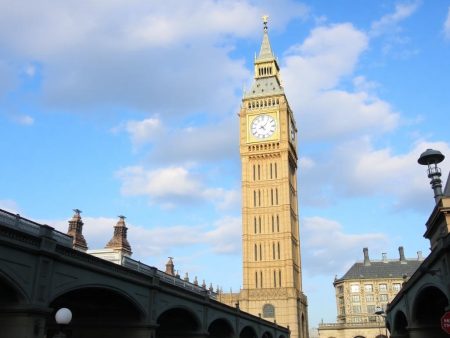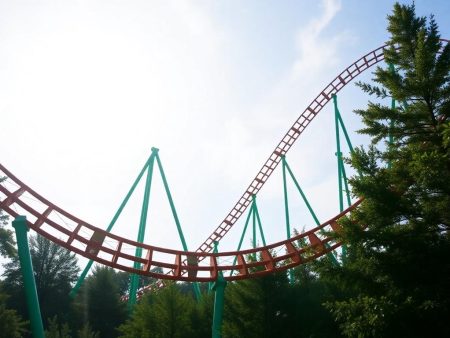Houston’s skyline is a dazzling display of architectural ambition, with towering structures that seem to touch the clouds. Among these impressive feats of engineering, one building stands taller than the rest, claiming its place as the crown jewel of the city’s horizon. It’s not just a skyscraper—it’s a symbol of Houston’s growth and innovation.
This architectural marvel isn’t just about height; i
Discover the Tallest Building in Houston: JPMorgan Chase Tower Facts & Visitor Info
Houston’s skyline is a dazzling display of architectural ambition, with towering structures that seem to touch the clouds. Among these impressive feats of engineering, one building stands taller than the rest, claiming its place as the crown jewel of the city’s horizon. It’s not just a skyscraper—it’s a symbol of Houston’s growth and innovation.
Convert the height of the tallest people, buildings, mountains and monuments to m, feet and inches to compare
0' 0" is equal to 0.0 cm or 0.00 m.
This architectural marvel isn’t just about height; it’s a testament to the city’s vibrant spirit and forward-thinking vision. From its sleek design to its commanding presence, the tallest building in Houston tells a story of ambition and progress, captivating locals and visitors alike.
Overview Of The Tallest Building In Houston
The tallest building in Houston, the JPMorgan Chase Tower, stands at 1,002 feet with 75 stories. Located at 600 Travis Street, it was completed in 1981 and serves as a prime example of modernist architecture. Designed by I.M. Pei & Partners, its sleek, five-sided design enhances both functionality and aesthetics.
As one of the tallest buildings in the United States, the tower houses office spaces for prominent corporations. The expansive floor plans, efficient systems, and panoramic views contribute to its reputation as a top commercial hub. Its Sky Lobby on the 60th floor, accessible to the public, offers breathtaking views of Houston’s skyline.
Situated in Downtown Houston, this iconic skyscraper significantly impacts the city’s economic and cultural landscape. It’s a focal point in Houston’s skyline and a testament to the city’s innovative and dynamic spirit.
Architectural Design And Features
The JPMorgan Chase Tower in Houston showcases a fusion of innovative design and practical functionality. Its architectural elements enhance its distinctiveness among downtown structures.
Exterior Design
The tower’s five-sided facade exemplifies modernist principles with clean lines and geometric precision. Clad in reflective glass and aluminum, the external surface maximizes natural light while reducing heat gain. The absence of ornamental features emphasizes the sleek, minimalist aesthetic. The slightly curved corners create subtle visual interest and improve wind resistance, a crucial consideration for a skyscraper of its height.
Interior Layout And Functionality
The interior prioritizes efficiency and comfort, featuring expansive open floor plans ideal for corporate offices. Sustainability elements, such as energy-efficient HVAC systems and advanced lighting solutions, support reduced energy consumption. The Sky Lobby on the 60th floor, accessible to the public, serves as both an architectural highlight and an observation area, offering unobstructed views of the Houston skyline. High-speed elevators, strategically placed service areas, and innovative structural designs ensure seamless functionality.
Historical Significance
JPMorgan Chase Tower holds a pivotal place in Houston’s history as the tallest building in the city and the state of Texas. Completed in 1981, it emerged during a period of rapid economic expansion fueled by the energy industry. As part of Houston’s growth narrative, the tower symbolized the city’s ambition to establish itself as a prominent center for business and innovation.
The tower’s completion marked a milestone in modern architecture, blending cutting-edge design with advanced engineering. Designed by I.M. Pei & Partners, it reflected the architectural trends of its time, prioritizing both functionality and aesthetic simplicity. It became a landmark in a vibrant downtown core, highlighting Houston’s transformation into a global metropolis.
As a cultural icon, the tower also reinforced Houston’s identity as a city of progress. Its prominent position in the skyline showcased the city’s economic strength and urban sophistication, contributing to its reputation as a hub for commerce, technology, and development.
Comparisons With Other Houston Skyscrapers
Houston’s skyline features numerous iconic structures, each contributing to the city’s architectural diversity. While the JPMorgan Chase Tower reigns as the tallest, other skyscrapers showcase distinct features and impressive heights.
Height Comparison
JPMorgan Chase Tower, at 1,002 feet, surpasses the next tallest building, the Wells Fargo Plaza, by 151 feet. Wells Fargo Plaza stands at 851 feet with 71 stories, making it a prominent but shorter counterpart. The third tallest, Williams Tower, reaches 901 feet but is located outside the downtown area, distinguishing it geographically.
The skyline’s height range includes notable structures like the Bank of America Tower at 780 feet and Heritage Plaza at 762 feet. While these buildings dominate the downtown area, none exceed the monumental stature of the JPMorgan Chase Tower.
Unique Features
The JPMorgan Chase Tower’s five-sided design sets it apart from the predominantly rectangular shapes of nearby skyscrapers like the Wells Fargo Plaza. Additionally, its Sky Lobby on the 60th floor offers panoramic views, a public-access feature absent in other skyscrapers at similar heights.
Wells Fargo Plaza stands out with its reflective glass facade and multi-story sky lobbies reserved for private use by tenants. Williams Tower, in contrast, features an iconic beacon seen from miles away, creating a visual signature in Houston’s architectural landscape.
Impact On The Houston Skyline
The JPMorgan Chase Tower defines Houston’s skyline with its commanding height of 1,002 feet, making it a focal point in the city’s architectural identity. Rising above other skyscrapers, the tower’s modernist design and five-sided facade create a distinct visual presence that enhances the skyline’s sophistication. Its reflective glass exterior not only maximizes natural light but also mirrors the changing Texas sky, integrating the building seamlessly into its urban environment.
The tower’s prominent height and unique structure emphasize Houston’s economic and cultural prominence. As the tallest building in Texas and among the tallest in the United States, it symbolizes the city’s aspirations and commercial success. Its Sky Lobby on the 60th floor offers unparalleled views, drawing attention to the cohesion and diversity of the surrounding architecture, including other iconic skyscrapers such as the Wells Fargo Plaza and Williams Tower.
The building anchors Downtown Houston, creating a sense of centrality and serving as a visual marker for the area. Its presence highlights the dynamic growth of the city, projecting Houston as a hub for innovation and business. By rising above the urban landscape, the JPMorgan Chase Tower has become a symbol of the city’s ambition, shaping how locals and visitors perceive its skyline.
Visitor Information And Accessibility
The JPMorgan Chase Tower offers an accessible and engaging experience for visitors. Its Sky Lobby on the 60th floor, open to the public, provides unparalleled views of Houston’s skyline on weekdays during business hours. Admission is free, making it an appealing destination for locals and tourists.
The tower’s location in Downtown Houston ensures easy accessibility. It is near public transportation options, including METRORail and several bus routes, and within walking distance of key downtown landmarks. Parking facilities are available in the surrounding area, though fees may vary.
Accessibility features include wheelchair-accessible entrances, elevators, and restrooms, ensuring a comfortable visit for individuals with mobility challenges. Signage throughout the building is clear and helps guide visitors to the Sky Lobby and other points of interest.
Visitors are encouraged to check current hours and visitor policies before arrival, as these may be subject to change due to building operations or holidays.
Conclusion
The JPMorgan Chase Tower stands as a remarkable symbol of Houston’s ambition and architectural brilliance. Its towering presence, innovative design, and cultural significance make it a standout feature of the city’s skyline. Whether admired for its modernist elegance or visited for the breathtaking views from the Sky Lobby, the tower continues to captivate locals and tourists alike.
As both a functional space and an iconic landmark, it reflects Houston’s vibrant spirit and commitment to progress. The JPMorgan Chase Tower isn’t just the tallest building in Houston; it’s a testament to the city’s dynamic energy and forward-thinking vision.
Frequently Asked Questions
What is the tallest building in Houston?
The JPMorgan Chase Tower is the tallest building in Houston, standing at 1,002 feet with 75 stories.
When was the JPMorgan Chase Tower completed?
The JPMorgan Chase Tower was completed in 1981.
Who designed the JPMorgan Chase Tower?
The tower was designed by the architectural firm I.M. Pei & Partners.
What makes the JPMorgan Chase Tower’s design unique?
Its five-sided design, sleek modernist architecture, reflective glass facade, and curved corners set it apart from other skyscrapers.
Does the JPMorgan Chase Tower have a public observation deck?
Yes, the Sky Lobby on the 60th floor is open to the public on weekdays, offering panoramic views of Houston’s skyline.
How does the JPMorgan Chase Tower impact the Houston skyline?
The tower defines Houston’s skyline with its height, modern design, and reflective exterior, symbolizing the city’s economic and cultural prominence.
What sustainability features does the JPMorgan Chase Tower include?
The building incorporates energy-efficient HVAC systems, maximizing natural light while minimizing heat gain.
How does the JPMorgan Chase Tower compare to other tall buildings in Houston?
It’s the tallest in Houston and displays a distinctive five-sided design, unlike the Wells Fargo Plaza or the Williams Tower.
Can visitors easily access the JPMorgan Chase Tower?
Yes, the tower is centrally located in Downtown Houston, accessible via METRORail, bus routes, and on-site parking facilities.
Are there accessibility features at the JPMorgan Chase Tower?
The building is fully wheelchair accessible, with elevators, accessible entrances, and restrooms available for individuals with mobility challenges.





